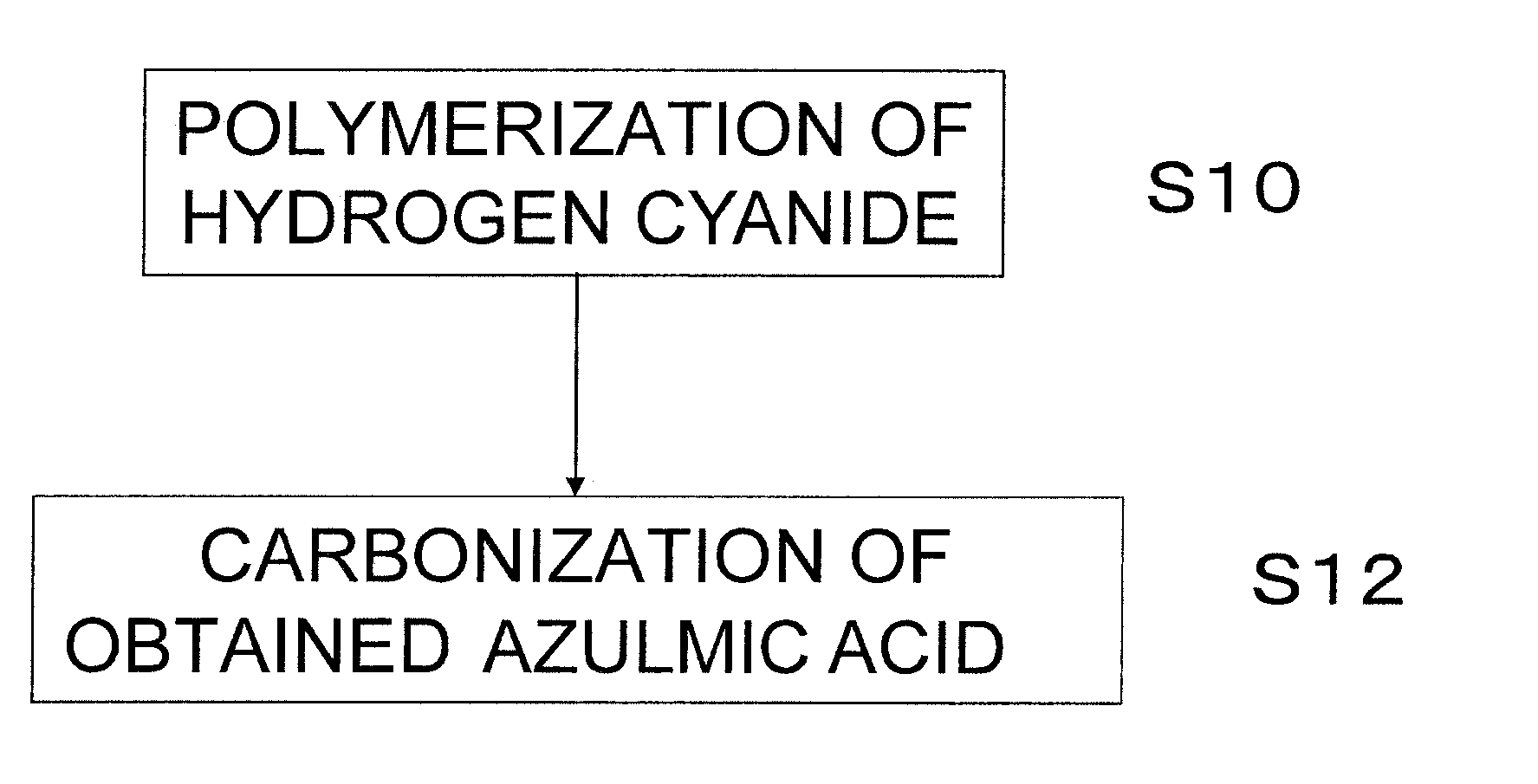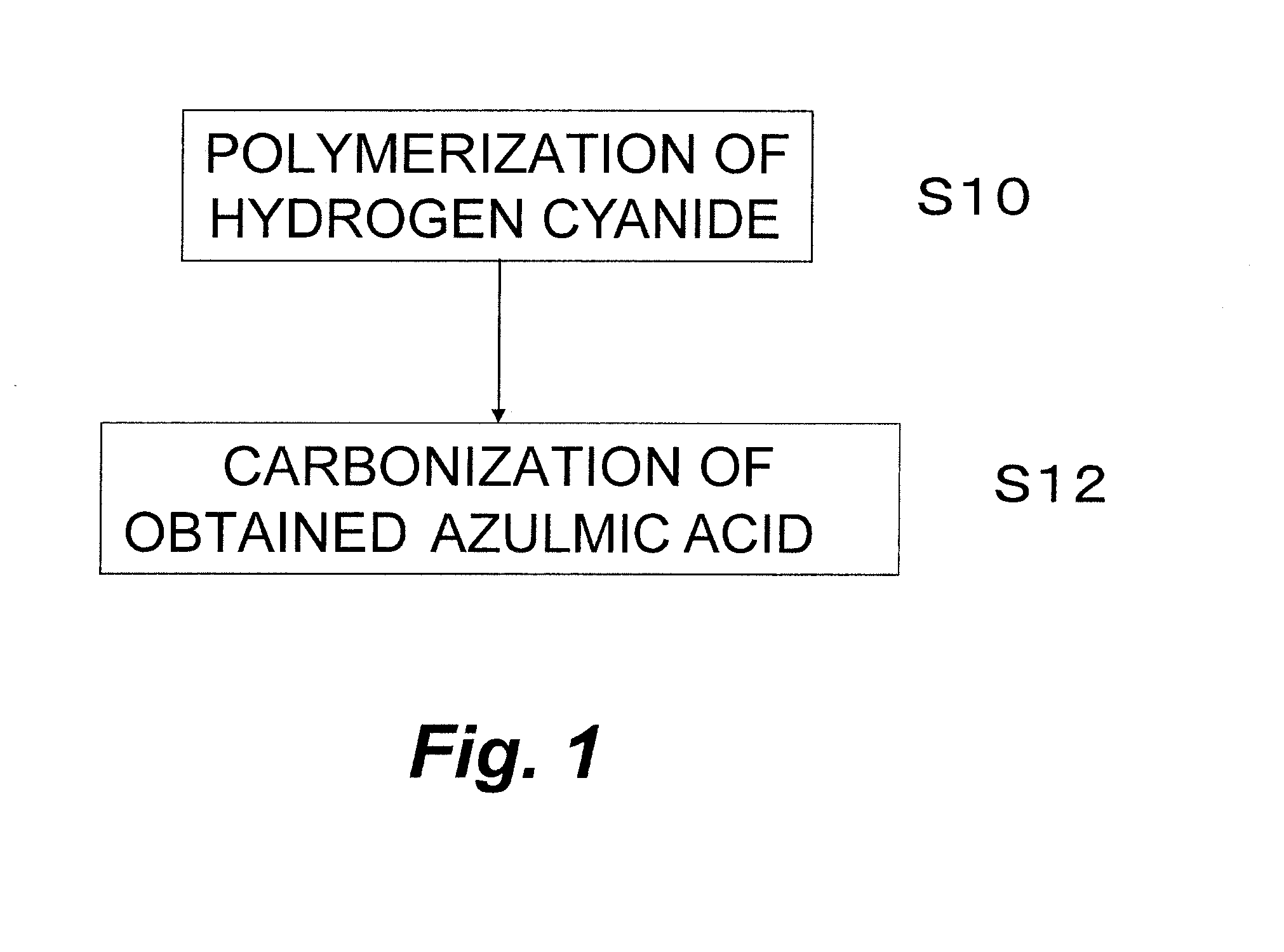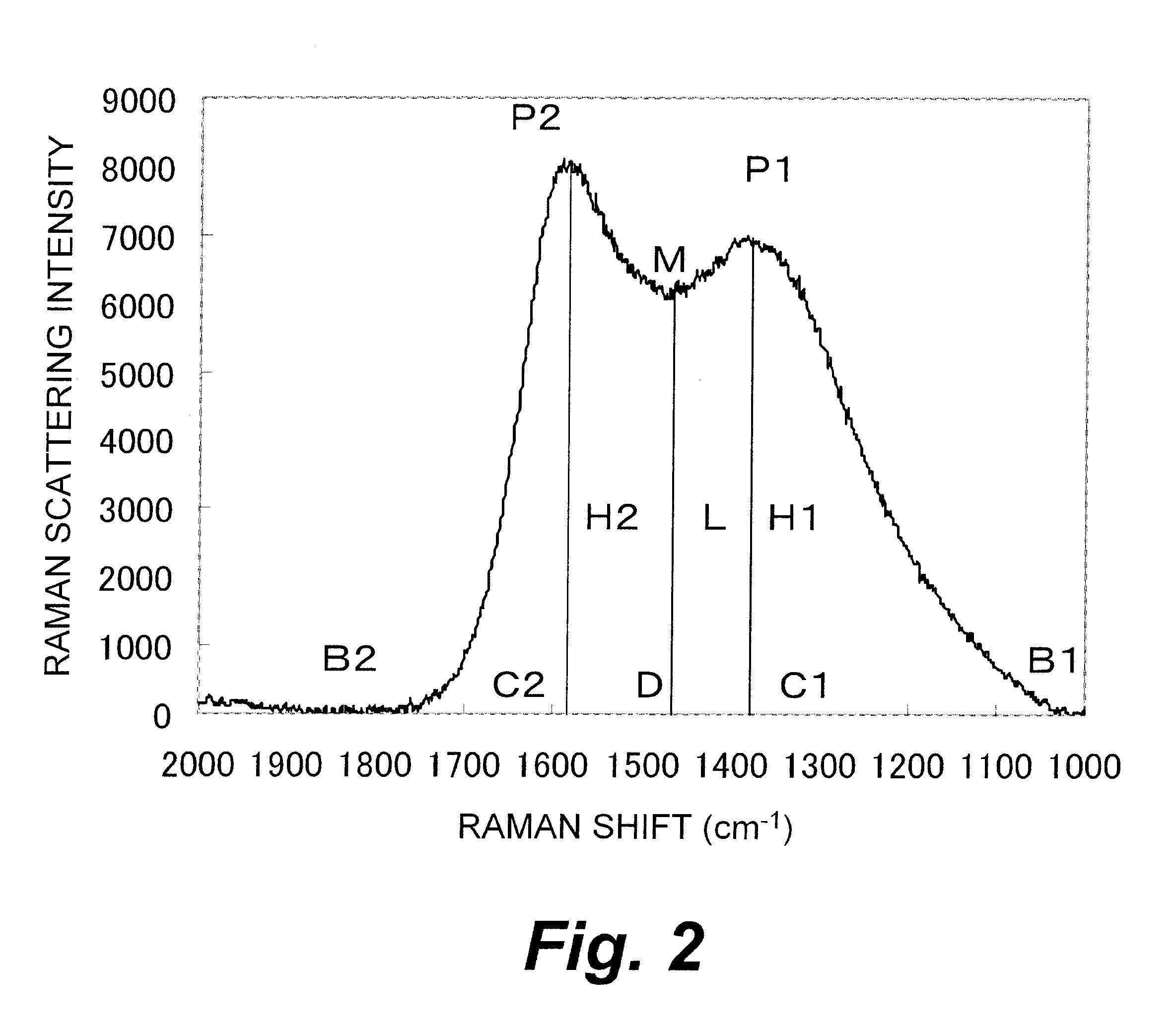Electrode, and lithium ion secondary battery, electric double layer capacitor and fuel cell using the same
a lithium ion secondary battery technology, applied in the field of electrodes, can solve the problems of poor high rate characteristics, inability to use as a power supply of hybrid type battery vehicles and battery vehicles, and inability to obtain charge/discharge capacity exceeding this value, etc., to achieve excellent cycle characteristics, high charge/discharge capacity, and high rate characteristics
- Summary
- Abstract
- Description
- Claims
- Application Information
AI Technical Summary
Benefits of technology
Problems solved by technology
Method used
Image
Examples
example 1
[0410]12 g of the azulmic acid obtained as above was sampled and filled in a quartz tube having an inner diameter of 25 mm. The temperature of this azulmic acid was elevated to 1000° C. over 70 minutes in a nitrogen gas flow of 300 Ncc / min under atmospheric pressure, and held at 1000° C. for 1 hour for carbonization to obtain a carbon material (AZC). The oxygen concentration in the nitrogen gas used was found to be 1 ppm as a result of measurement using a trace oxygen analyzer (306WA-type, manufactured by Teledyne Analytical Instruments).
(Results CHN Analysis)
[0411]In the obtained AZC, the number ratio of nitrogen atoms to carbon atoms (NN / NC) was 0.085 and the number ratio of hydrogen atoms to carbon atoms (NH / NC) was 0.10.
(Results of Measurement of Laser Raman Spectrum)
[0412]The obtained AZC had peaks around 1382 cm−1 (P1) and around 1585 cm−1 (P2) in the range from 1000 to 2000 cm−1 and had a ratio of (L / H1) of 0.88.
(Results of Measurement of X-Ray Diffraction)
[0413]The obtained ...
example 2
[0422]A negative electrode for a lithium ion secondary battery was prepared using the AZC obtained by in Example 1 according to the preparation process of a negative electrode for a lithium ion secondary battery described above. The density of the carbon material for the negative electrode was adjusted to 6.4 mg / cm2 by the amount of the solvent and the thickness of the doctor blade.
[0423]A lithium ion secondary battery was prepared according to the method of preparing a lithium ion secondary battery described above.
[0424]The discharge capacity was measured according to the method for measuring the discharge capacity described above. The results are shown in Table 1.
[0425]The cycle characteristics were measured according to the method for measuring the cycle characteristics described above. The results are shown in Table 1.
[0426]The high rate characteristics were measured according to the method for measuring the high rate characteristics described above. The results are shown in Ta...
example 3
[0428]12 g of the azulmic acid obtained as above was sampled and filled in a quartz tube having an inner diameter of 25 mm. The temperature of this azulmic acid was elevated to 900° C. over 50 minutes in a nitrogen gas flow of 300 Ncc / min under atmospheric pressure, and held at 900° C. for 1 hour for carbonization to obtain a carbon material (AZC). The oxygen concentration in the nitrogen gas used was found to be 1 ppm as a result of measurement using a trace oxygen analyzer (306WA-type, manufactured by Teledyne Analytical Instruments).
(Results of CHN Analysis)
[0429]In the obtained AZC, the number ratio of nitrogen atoms to carbon atoms (NN / NC) was 0.18 and the number ratio of hydrogen atoms to carbon atoms (NH / NC) was 0.19.
(Results of Measurement of Laser Raman Spectrum)
[0430]The obtained AZC had peaks around 1368 cm−1 (P1) and around 1577 cm−1 (P2) in the range from 1000 to 2000 cm−1 and had a ratio of (L / H1) of 0.87.
(Results of Measurement of X-Ray Diffraction)
[0431]The obtained ...
PUM
 Login to View More
Login to View More Abstract
Description
Claims
Application Information
 Login to View More
Login to View More - R&D
- Intellectual Property
- Life Sciences
- Materials
- Tech Scout
- Unparalleled Data Quality
- Higher Quality Content
- 60% Fewer Hallucinations
Browse by: Latest US Patents, China's latest patents, Technical Efficacy Thesaurus, Application Domain, Technology Topic, Popular Technical Reports.
© 2025 PatSnap. All rights reserved.Legal|Privacy policy|Modern Slavery Act Transparency Statement|Sitemap|About US| Contact US: help@patsnap.com



